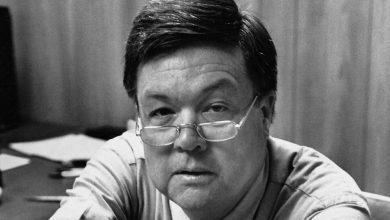Morning Person? You Might Have Neanderthal Genes to Thank.

Neanderthals were morning people, a new study suggests. And some humans today who like getting up early might credit genes they inherited from their Neanderthal ancestors.
The new study compared DNA in living humans to genetic material retrieved from Neanderthal fossils. It turns out that Neanderthals carried some of the same clock-related genetic variants as do people who report being early risers.
Since the 1990s, studies of Neanderthal DNA have exposed our species’ intertwined history. About 700,000 years ago, our lineages split apart, most likely in Africa. While the ancestors of modern humans largely stayed in Africa, the Neanderthal lineage migrated into Eurasia.
About 400,000 years ago, the population split in two. The hominins who spread west became Neanderthals. Their cousins to the east evolved into a group known as Denisovans.
The two groups lived for hundreds of thousands of years, hunting game and gathering plants, before disappearing from the fossil record about 40,000 years ago. By then, modern humans had expanded out of Africa, sometimes interbreeding with Neanderthals and Denisovans.
And today, fragments of their DNA can be found in most living humans.
Research carried out over the past few years by John Capra, a geneticist at the University of California, San Francisco, and other scientists suggested that some of those genes passed on a survival advantage. Immune genes inherited from Neanderthals and Denisovans, for example, might have protected them from new pathogens they had not encountered in Africa.
Dr. Capra and his colleagues were intrigued to find that some of the genes from Neanderthal and Denisovans that became more common over generations were related to sleep. For their new study, published in the journal Genome Biology and Evolution, they investigated how these genes might have influenced the daily rhythms of the extinct hominins.
Inside the cells of every species of animal, hundreds of proteins react with each other over the course of each day, rising and falling in a 24-hour cycle. They not only control when we fall asleep and wake up, but also influence our appetite and metabolism.
To explore the circadian rhythms of Neanderthals and Denisovans, Dr. Capra and his colleagues looked at 246 genes that help to control the body clock. They compared the versions of the genes in the extinct hominins to the ones in modern humans.
The researchers found over 1,000 mutations that were unique only to living humans or to Neanderthals and Denisovans. Their analysis revealed that many of these mutations probably had important effects on how the body clock operated. The researchers predicted, for example, that some body-clock proteins that are abundant in our cells were much scarcer in the cells of Neanderthals and Denisovans.
Next, the scientists looked at the small number of body-clock variants that some living people have inherited from Neanderthals and Denisovans. To see what effects those variants had on people, they probed the UK Biobank, a British database holding the genomes of half a million volunteers.
Along with their DNA, the volunteers provided answers to a long list of health-related questions, including whether they were early risers or night owls. To Dr. Capra’s surprise, almost all the ancient body-clock variants increased the odds that the volunteers were morning people.
“That was really the most exciting moment of the study, when we saw that,” Dr. Capra said.
Geography might explain why the ancient hominins were early risers. Early humans lived in Africa, fairly close to the Equator, where the duration of days and nights stays roughly the same over the course of the year. But Neanderthals and Denisovans moved into higher latitudes, where the day became longer in the summer and shorter in the winter. Over hundreds of thousands of years, their circadian clocks may have adapted to the new environment.
When modern humans expanded out of Africa, they also faced the same challenge of adapting to higher latitudes. After they interbred with Neanderthals and Denisovans, some of their descendants inherited body-clock genes better suited to their new homes.
All of these conclusions, however, stem from a database limited to British people. Dr. Capra is starting to look at other databases of volunteers with other ancestries. If the links hold up, Dr. Capra hopes ancient body clocks can inspire some ideas about how we can adapt to the modern world, where circadian rhythms are disrupted by night shifts and glowing smartphones. These disruptions don’t just make it hard to get a good night’s sleep; they can also raise the risk of cancer, obesity and a host of other disorders.
Michael Dannemann, an evolutionary geneticist at the University of Tartu in Estonia who was not involved in the new study, said one way to test Dr. Capra’s variants would be to engineer various human cells in the lab so that their genes were more like those of Neanderthals and Denisovans. Then scientists could grow clusters of the cells and watch them go through their daily cycles.
“This step forward not only advances our knowledge of how Neanderthal DNA influences present-day humans,” he said, “but also offers a pathway to expanding our understanding of Neanderthal biology itself.”



